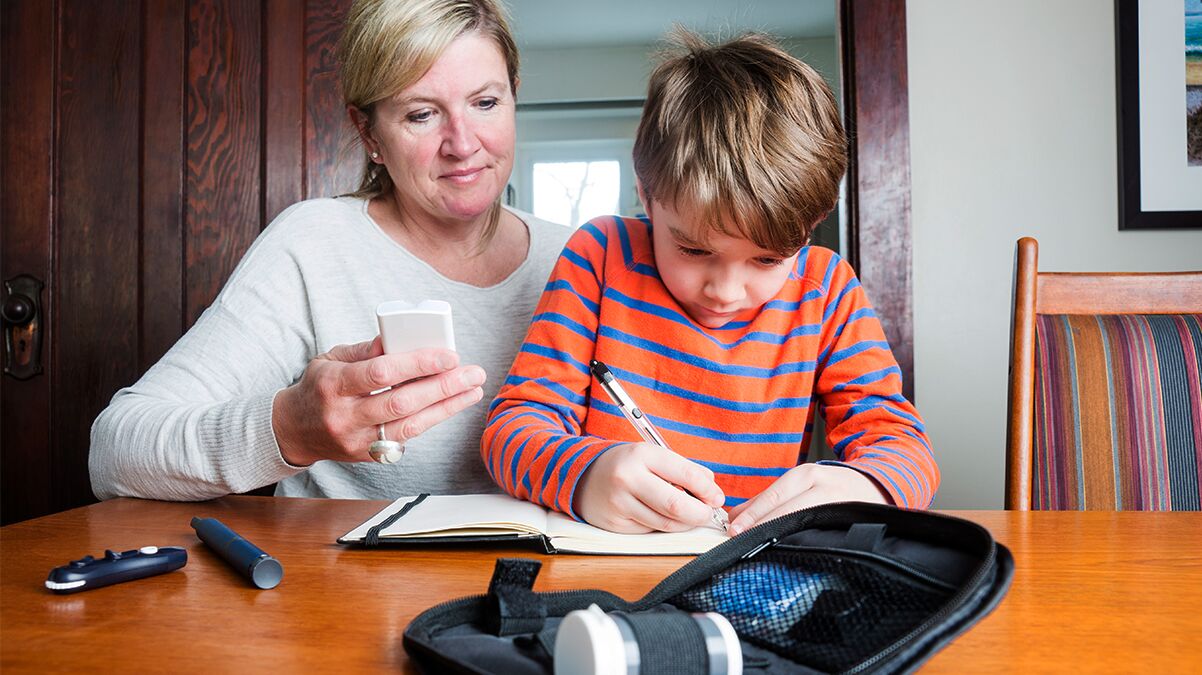Parenting a Child Who Has Type 1 Diabetes
Parents of children with type 1 diabetes (T1D) are confronted with the often demanding task of raising a child while helping them navigate life with a chronic disease. Feelings of guilt, anxiety and fear are only the tip of the iceberg. There will be nights spent awake checking your child’s blood sugar to make sure they are not hypoglycemic (has low blood sugar), and days worrying about snack time at your child’s school.
We understand how scary it can be and want to help, no matter what stage your family is at in figuring out your new “normal”.
Dealing with the Diagnosis
When your child is first diagnosed, it can be overwhelming for a parent. There is a lot to learn and you’ll need to get up to speed quickly on how to manage type 1 diabetes and incorporate lifestyle changes at home. Among other things, you will need to:
- Learn to count carbohydrates and sometimes change your family’s diet
- Learn about long- and short-acting insulin, and when to use each
- Learn how to give shots or use an insulin pump
- Learn to check your child’s blood sugar and interpret the results
- Understand how exercise, illness, and stress affect blood sugar levels
- Mediate rivalries and feelings of jealousy between your children (if you have more than one)
- Build self-esteem and understand the range of emotions of a child who may suddenly feel very overwhelmed with what is happening or feel that they are different from their peers
- Educate those who don’t know about type 1 diabetes or have misunderstandings about the disease
- Educate friends, family, school administrators and others about your child’s disease, and what they can do to help. It’s important to enlist the help of allies, because while you can (and will) do a lot for your child, you can’t do it all.
After your child is diagnosed, you will not only be responsible for keeping them safe and building in new routines, you’ll also be a crucial support system. Your child needs you to create a sense of stability during the hard times, when the disease may feel taxing or out of control. While it is important that you do your best to remain the steady and dependable caregiver you have always been, don’t forget to take care of yourself and turn to your own support system for help.
It’s common for parents of a child with diabetes to experience stress and fear, and you may feel that you need to hide those emotions and remain strong. Remember that you and your child are on this journey together—research has shown that collaborating with your child can be an effective coping strategy for both of you.
Putting Together a Management Plan For Your Child
The main goals of treating children a child with type 1 diabetes are maintaining normal growth and developing, keeping blood sugar levels within a target range (determined in consultation with a physician) and promoting emotional well-being.
Eating raises blood sugar levels, while taking insulin and exercising can lower them. As you work with your child on creating an effective diabetes management plan, you’ll want to make sure it includes the following:
- Eating reasonably, consistently, and on schedule
- Testing blood sugar level regularly
- Adjusting insulin based on blood sugar level and activities
- Exercising regularly
The key to good sugar control with type 1 diabetes is maintaining a careful balance between food, exercise and insulin. It’s a juggling act to keep blood sugar levels within the target range. Therefore, children with type 1 diabetes must stick to their scheduled blood check, insulin injection and snack times. Even small deviations from a child’s scheduled type 1 diabetes care plan can cause blood sugar levels to rise or fall.
Encourage your child to be open about their disease with their school nurse, teachers and classmates—this will help them feel more comfortable with themselves and allow others to recognize the symptoms of low blood sugar in case of a hypoglycemic emergency. Learn more about our back to school resources to help people in your and your child’s life learn about type 1 diabetes and how to best support your child when they are away from home at school.